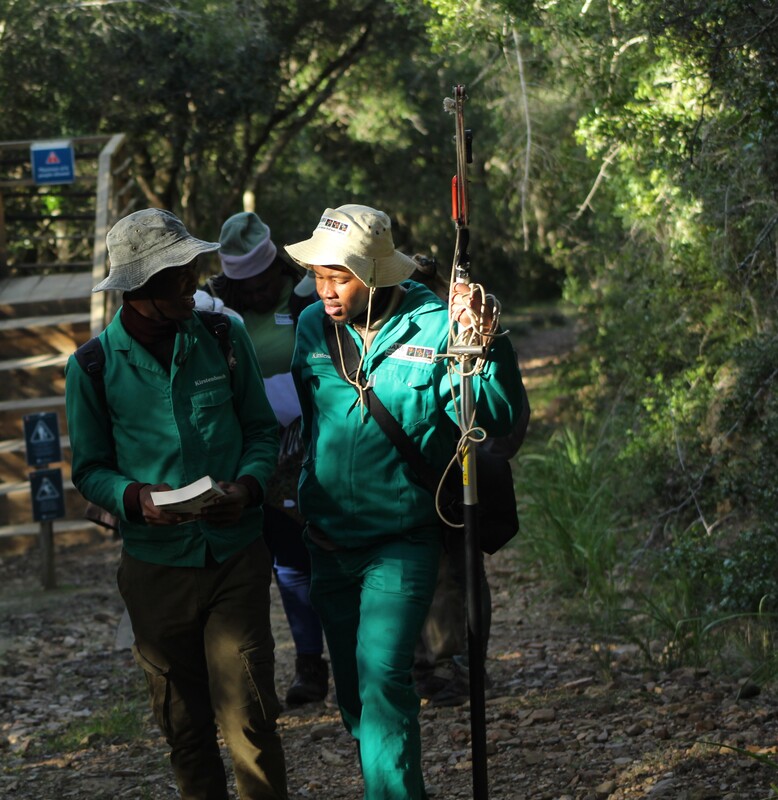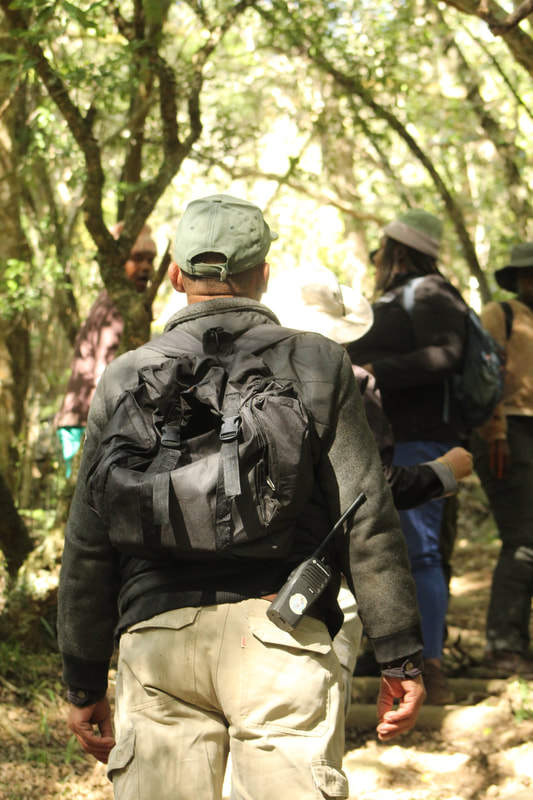|
It was with great pleasure that the Grootvadersbosch Conservancy got the opportunity to collaborate with the South African National Biodiversity Institute (SANBI) in their mission to collect and conserve seeds from our region to preserve them for a lifetime in the Millennium Seed Bank Partnership (MSBP). The MSBP is an international program where the main goal is to collect and conserve seeds on a global scale, with over 80 countries involved, including South Africa. The MSBP banks the collected seeds at the Seed Conservation Department at the Royal Botanic Gardens (Kew) where the seeds are dried and kept in freezers under -20°C. These conditions make it possible for the seeds to stay viable for hundreds of years and be available to use when necessary. The aim of the Millennium Seed Bank Partnership is to collect all plant species for ex-situ conservation and storage in the long term. Priority is given to the protection of threatened plant species to reduce the possibility of total extinction. Field trips and pre-preparations are vital in planning and implementing the collecting of specimens and seeds, targeted species should be determined beforehand, and the team should also be prepared to collect specimens that were not on the targeted list. This will ensure an effective and successful field trip. There are multiple collection techniques that can be used when collecting:
THE MISSION On the 6th of June, the Grootvadersbosch Conservancy team joined SANBI for the collection of specimens and seeds of the outstanding species that needed to be collected. The SANBI project is led by Naomi Mdayi and Sibahle Gumede with Yandisa Ndzeku (photographer and collector), Michael Ndovu (photographer and collector), Sihle Mvunyiswa (collector), and Sphephelo Kheswa (collector). They were joined by Goliath Highburg, Jessi Venter, Bella Liebenberg, Rachel Jacobz, and Marius Piek from the Conservancy to assist with local knowledge. We started our journey in the Grootvadersbosch Nature Reserve Forest area where most of the forest-targeted species can be found. Our journey did not go on too long before we spotted the first plant species to collect for the day. The team identified the species together (with the help of reliable identification elements) to ensure that it was the correct species. Naomi and Sibahle filled in the required data in the standard MSBP data sheet that records all the details of the species and its surrounding environment – soil characteristics, geology, slope aspect, and altitude. These are recorded for future restoration implications. It is a time-consuming process but essential to complete onsite to avoid any details being missed. Yandisa Ndzeku, Michael Ndovu, Sihle Mvunyiswa, and Sphephelo Kheswa oversaw the collection of two herbarium specimens for each species collected and of viable seeds where possible, using the previously mentioned collecting techniques. The collected specimens were temporarily put into plant specimen collecting bags and were later pressed in herbarium plant drying pressers. These steps were followed throughout the day’s journey, with the Grootvadersbosch Conservancy team assisting in the identification of plant species and the carrying of specimens. Specimens collected were as follows: Anemone vesicatoria – Blisterleaf – Brandblaar Scolopia mundii – Red pear - Rooipeer Podocarpus latifolius – Real yellowwood – Opregte geelhout Canthium inerme – Common turkey-berry – Gewone bokdrol Ilex mitis – African holly - Waterboom Chionanthus foveolatus – Pock ironwood – Pokysterhout Phylica pinea – Pine Hardleaf Elegia racemosa – Restionaceae After collection and identification, the specimens are prepared for the herbarium. The process involves carefully placing the plants in a press with layers of press paper, to absorb any excess moisture from the species. This is important to make it a perfect pressed herbarium specimen. Once dried, it will be removed from the press, labelled with other associated data of the collection, and submitted to an Herbaria to confirm that all the data are correct before it is shipped to the MSBP and Royal Botanical Gardens. Thank you to the Grootvadersbosch Conservancy team. Their contributions were so instrumental in helping us to achieve our goal. They were willing to go above and beyond to ensure the smooth execution of the project. We were thoroughly impressed with their professionalism, dedication, and expertise throughout the entire process. It was a great pleasure working with them, and we look forward to collaborating again in the future.” from Sphephelo Kheswa, SANBI. REFERENCES:
SANBI, 2023. MILLENIUM SEED BANK. Available at: https://www.sanbi.org/biodiversity/foundations/biosystematics-collections/millennium-seed-bank/ [Accessed on 5 July 2023]
0 Comments
|
AuthorGVB Conservancy Staff Archives
May 2024
Categories |















 RSS Feed
RSS Feed






